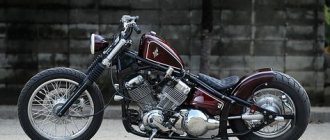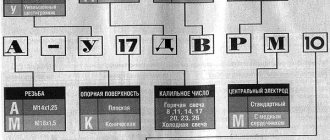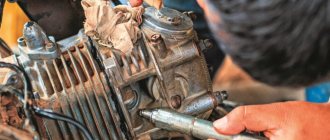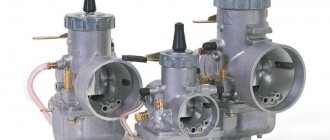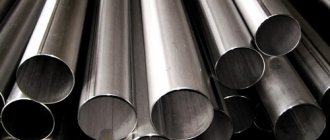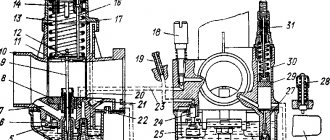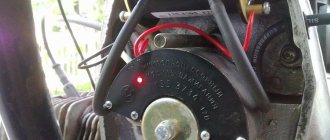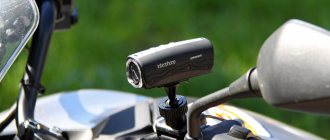Messages [21 to 36 of 36]
21↑ Reply from DMITRY 02/13/2011 12:30:05
- DIMITRY
- Pro
- Inactive
- Name: DMITRY
- From: RUSSIA MO
- Registered: 17-03-2010
- Messages: 705
- Reputation: 32
Re: tank painting
putty a little, prime it then paint it well, it’s bad that the Prenza region is far from the Moscow region they would paint it. look for a place to paint from a can, don’t paint.
+1
22↑ Reply from jipss 02/13/2011 12:41:47
- jipss
- Moderator
- Inactive
- Name: Dima
- From: Gornozavodsk, Perm region.
- Registered: 18-07-2010
- Messages: 2 521
- Reputation: 186
- Motorcycle: Ural 'grom', Ural M72m, cross M-104, forest IMZ with sidecar.
Re: tank painting
look for a place to paint from a can, don’t paint.
23↑ Reply from Azat 02/13/2011 18:12:55
- Azate
- Elder
- Inactive
- Name: AZAT
- From: KUZNETSK
- Registered: 13-10-2010
- Messages: 1 321
- Reputation: 49
- Motorcycle: Ural ImZ 8.103.10
Re: tank painting
In short, today I looked at the mastic for 80 rubles, the primer costs 100 rubles, it’s red, I asked the seller, he told me that the norm doesn’t matter what color
24↑ Reply from DMITRY 02/13/2011 19:00:01
- DIMITRY
- Pro
- Inactive
- Name: DMITRY
- From: RUSSIA MO
- Registered: 17-03-2010
- Messages: 705
- Reputation: 32
Re: tank painting
The red primer is bad; it needs to be dried in an oven.
Added: 2011-02-13 19:00:01
take the primer and paint mobilehell, you will need a thinner, hardener and solvent you will have enough for the whole boat
25↑ Reply from Alucard 02/14/2011 00:12:34
- Alucard
- Newbie
- Inactive
- Registered: 08-02-2011
- Messages: 16
- Reputation: 2
Re: tank painting
So, first of all, about mastic, when it hardens, the mastic still smears at least a little. therefore, there is a high probability that after painting you press anywhere on the tank and the mastic will creep along with the paint. or in the summer you leave it in the sun, the tank will heat up and the mastic will slowly begin to creep. Better putty, 250 grams costs about 130 rubles. And these 250 grams are enough to putty the tank up and down 5 times. The second thing is primer, it is necessary to prime before painting. A 400 ml can of primer is enough to prime the tank three times. trktje-painting. I would not recommend painting correctly from cans. The paint peels off quickly and is not durable at all. It’s easier to take it to a car repair shop, let it be painted there and it won’t cost that much. well, or with a spray gun. Well, at least for a balloon... but I don’t recommend it.
+2
26↑ Reply from jipss 02/14/2011 00:24:27
- jipss
- Moderator
- Inactive
- Name: Dima
- From: Gornozavodsk, Perm region.
- Registered: 18-07-2010
- Messages: 2 521
- Reputation: 186
- Motorcycle: Ural 'grom', Ural M72m, cross M-104, forest IMZ with sidecar.
Re: tank painting
I don’t know what kind of mastic you have, I smeared it all over the hood of my Skoda after it flew under the UAZ, it has hardened like plastic and is not afraid of heat. When I worked for gas workers, I stole two boxes, I don’t know, maybe it’s the price and quality?
SUSPENSION
| Name of works | Price, rub | Note |
| Fork bulkhead, with replacement of oil seals. (reversal) | from 3000 | including dismantling and installation |
| Fork bulkhead, with replacement of oil seals. (telescope) | from 2500 | including dismantling and installation |
| Replacing steering column bearings on a classic | from 3000 | check the price with a mechanic |
| Replacing steering column bearings on a sportbike | from 2500 | check the price with a mechanic |
| Replacing rear shock absorbers | from 800 | |
| Replacing the monoshock absorber | from 1000 | |
| Replacing front wheel bearings with wheel removal | from 1000 | |
| Replacing rear wheel bearings with wheel removal | from 1500 | |
| Editing disks | — | check the price with a mechanic |
| Replacing chain and sprockets | 2500 | |
| Chain lubrication | 200 | |
| Changing the oil in the gearbox | 300 | |
| Chain tightening | 200 | |
| Removing and installing wheels | 500 | |
| Cleaning and Lubricating the Chain | 800 | |
| Replacing swingarm bearings | from 2000 |
Messages [14]
1↑ Topic by Frol 27-10-2013 03:13:21
- Frol
- Participant
- Inactive
- Name: Alexey
- From: Tula region
- Registered: 29-01-2013
- Messages: 57
- Reputation: 1
- Motorcycle: Ural
Topic: What paint is better to paint a tank?
What paint is best to paint the tank? I painted it with spray paint, but all the paint is eaten by gasoline when it gets on it. Please advise which one is better to paint?
Edited by Frol (27-10-2013 03:14:02)
2↑ Reply from SANYa pif 27-10-2013 10:01:48
- SANYA pif
- Elder
- Inactive
- Name: Alexander
- From: Bely, Tver region.
- Registered: 06-02-2013
- Messages: 4 880
- Reputation: 287
- Motorcycle: Ural 8.103.10
Re: What paint is better to paint the tank?
painted the bike like this and it seems to be ok External link
−1
3↑ Reply from Roma 10/27/2013 10:14:07
- Roma
- Uralomaniac
- Inactive
- Name: Roman
- From: Shentala, Samara region.
- Registered: 23-10-2012
- Messages: 6 104
- Reputation: 498
- Motorcycle: Ural IMZ 8.103-10
Re: What paint is better to paint the tank?
Mobihel, Vika, Kolomis.. Yes, a lot of colors!
−1
4↑ Reply from kilowatt3 10/27/2013 11:20:03
- kilowatt3
- Electrician
- Inactive
- Name: Alexander
- From: Belgorod region Alekseevka
- Registered: 24-03-2011
- Messages: 1 950
- Reputation: 197
- Motorcycle: Dnepr MT 11, but there were different ones and more than one!
Re: What paint is better to paint the tank?
What paint is best to paint the tank?
two-component, but not from a spray can, if from a spray can, then cover it with varnish and will not be washed off with gasoline then
5↑ Reply from Watto 27-10-2013 13:25:30
- Watto
- Elder
- Inactive
- Name: Vladimir
- From: Nizhny Novgorod region
- Registered: 22-09-2012
- Messages: 1 678
- Reputation: 236
- Motorcycle: ZiD-50, Honda CB750 Night Hawk, Dnepr MT 10-36
Re: What paint is better to paint the tank?
I painted with two-component acrylic Vika
. Tested - Gasoline does not corrode it.
6↑ Reply from serega-233 09-12-2013 16:03:01
- serega-233
- Familiar
- Inactive
- Registered: 27-05-2013
- Messages: 61
- Reputation: 2
- Motorcycle: MT 11 Dnepr
Re: What paint is better to paint the tank?
7↑ Reply from lopster27 15-12-2013 17:36:16
- lopster27
- Participant
- Inactive
- Name: Denis
- From: R.P. Bolshaya-Irba
- Registered: 13-12-2013
- Messages: 32
- Motorcycle: Dnepr 11
Re: What paint is better to paint the tank?
I was also told to take acrylic
8↑ Reply from Roma 12/15/2013 17:40:43
- Roma
- Uralomaniac
- Inactive
- Name: Roman
- From: Shentala, Samara region.
- Registered: 23-10-2012
- Messages: 6 104
- Reputation: 498
- Motorcycle: Ural IMZ 8.103-10
Re: What paint is better to paint the tank?
My motorbike is painted in a regular metallic paint - I’ve spilled gasoline on the tank many times and it doesn’t corrode the paint. The frame is painted with acrylic, looks like sadolin! Oil, gasoline, whatever. And this despite the fact that everything was painted at a temperature of about -1 degree!
Well, the painter is a master...
9↑ Reply from kilowatt3 12/18/2013 23:07:29
- kilowatt3
- Electrician
- Inactive
- Name: Alexander
- From: Belgorod region Alekseevka
- Registered: 24-03-2011
- Messages: 1 950
- Reputation: 197
- Motorcycle: Dnepr MT 11, but there were different ones and more than one!
Re: What paint is better to paint the tank?
metallic in itself is like paint, crap if not for varnish, the whole effect is given by varnish, and it protects metallic from being corroded by benzine, varnish is a kind of polyester resin
Painting technology
If you follow painting technology and use high-quality materials and tools, you can paint a motorcycle at home.
Choice of paint and primer. The first step is to purchase primer grades GF-21 or FL-03K, since they do not react with the main coating and have good adhesion.
We choose paint mainly from three options:
- Nitro-enamel. Is the most popular option. Among the main advantages, it is worth noting the low cost, a huge selection of shades and quick drying. But the disadvantages are low gloss, low resistance to chemical materials and poor resistance to mechanical stress. This option can also be called seasonal, since the paint can be damaged even by drops of oil and sand flying in motion.
- Alkyd. It is a more practical option that holds chemical solvents tightly. Resistant to mechanical damage. The cost of such paints is higher compared to the previous option, plus there is not much variety of colors.
- Acrylic. It is an intermediate option, which is characterized by mechanical resistance, excellent choice of colors, and easy application. In addition to the tank, almost all parts can be painted with this paint. If you drop gasoline, the color will immediately change to a duller shade.
If you don’t have a lot of money, but have enough time, then nitro enamels are just right. For other cases, it is worth taking alkyd or acrylic paints (for everything except the tank).
You also need to prepare:
- Remover for old paint;
- Degreaser (white spirit);
- Paint thinner;
- Sandpaper (600 and 1000);
- Putty;
- Masking tape;
- Air compressor with a spray gun and a set of sprayers;
Preparation. Once everything you need is on hand, you can begin preparatory work. I would like to immediately note that the majority of the time will be spent on this, but further success will largely depend on this.
- First of all, prepare your work area. Vacuum the floor, stick a film on the ceiling (from falling dirt), spill a little water on the floor to prevent dust from rising.
- Wash the part from dirt and oil;
- Straighten the surface (if necessary, carry out welding work);
- Remove the paint layer (with sandpaper, a power tool with a special attachment, or a chemical remover);
- Degrease the cleaned surface and begin mixing the soil;
- Apply 3-4 layers of primer;
- Dry the part for 2-3 days at normal temperature or at 100 degrees (until dry);
- Apply putty to the primed surface (if necessary), while trying to make the layer as thin as possible;
- Level the putty areas with 600 sandpaper, and the entire part with 1000 sandpaper.
Painting. We begin the painting process by mixing the paint and, if necessary, diluting it with a solvent.
Next, we will need to charge the spray gun, adjust the spray spot and apply the first layer at a distance of 25 - 30 cm. At the same time, it should be applied as thinly as possible, since it is considered a developing film. Next, we check the part, and if defects from previous work are detected, they should be eliminated in a timely manner.
Remember! Before you start applying paint, you should correctly adjust the spray gun so that the applied layer is within the range of 80 - 120 microns. In this case, the hand should move at a speed of approximately 40 cm/s.
We wait until the paint dries. Lightly sand the first layer and begin applying the second layer. Again, wait until the layer dries, lightly sand and apply the third – finishing layer.
How to paint a motorcycle yourself
When I bought my motorcycle, I didn’t think that I would ever have a thirst for modifications. Having calmly skated the next season and parked the motorcycle for the winter, for some reason I could not calm down. I came to the garage and looked at my handsome car, and the more I looked at it, the more different thoughts flashed through my head, how to turn an ordinary Ural into something that I wouldn’t be ashamed to show to my friends next year. Then, by chance, an old tank from a K-750 turned up for me and it began...
How much does it cost to paint a motorcycle?
At first I wanted to give my motorcycle to painters who paint cars, so that they would professionally prepare everything and paint it according to my plans. I went around to many people, but to my surprise no one wanted to take on painting the motorcycle. Everyone made excuses, saying they were busy and had a lot of work. I couldn't understand anything. Finally, one of the painters, after my next request, explained to me what the problem was. He said it was easier for him to paint the fender or hood of someone's car than to fiddle around with preparing to paint the tank or frame. He will take out the fender or hood and paint it quickly, he has everything for this and immediately earns the amount, then he will take the next car and so on, flow. The master told me exactly that: there is a lot of time and fuss with round surfaces, but little exhaust. He advised me to find some motorcycle fan or paint it myself.
The first thing is paint, and then the technique
It is paint that is a component with a capital letter, not “direct hands”, but paint. Because a clumsy person with an expensive color scheme can get an attractive result, but a master with something unclear will not get anything good
That’s why it’s so important to understand the recipe and ingredients.
There are small factors to consider when purchasing paint. Firstly, the cost
It's not even worth explaining. The cheaper this design solution is, the better. Secondly, the technique and complexity of applying the material. Sometimes it happens that it is simply impossible to apply paint with your own hands. It either bursts or falls off, in general, you need a special environment and special tools. Thirdly, drying time. This factor is also worth paying attention to. After all, not every material dries quickly and evenly; for some options it is worth creating special conditions.
Preparing the equipment
To avoid wasting time, prepare the necessary equipment and tools in advance.
So, you may need:
1. Portable spotlight.
High-quality lighting from all sides of the car is very important. Otherwise, you may not notice the difference in shades and ruin your work.
The ideal option is to illuminate the car from all sides.
2. Vinyl drill bit.
A useful thing for removing old corrosion on a car body. With its help you can quickly remove excess paint, areas with severe rust, putty and primer.
The advantage of such nozzles is that they do not heat the surface and do not harm the metal.
3. Construction hair dryer.
A reliable assistant if you have to remove moldings from your car, various stickers or decorative components. In general, everything that is held on by glue is easier to dismantle after proper heating.
4. Orbital sander.
Very useful for preparing the body for putty and leveling the body before painting. In addition, a grinding machine will also come in handy at the final stage, when polishing.
5. Polishing machine.
Can speed up the body processing process after all work is completed
In addition, find (buy) foam pads (it is important that they have different densities) and sheepskin polishing pads
6. Painting mask.
Essential if you care about your health. Paint and varnish emit dangerous and harmful fumes that should not enter the lungs. You can buy this product or ask your friends.
7. Painting gun.
One of the main tools for painting the body. With its help you can apply paint, varnish and even liquid primer or putty to your car.
8. Not a big paint gun.
The small size is useful for touching up small areas. The nozzle diameter is about a millimeter, so you can set up a “torch” the size of a ten-kopeck coin.
9. Compressor.
One of the most important elements. Without it, it is impossible to paint the car body efficiently and quickly. Of course, it makes no sense to buy it for a one-time job. If you wish, you can rent equipment or look for it from friends.
But that is not all.
You will need a lot of related materials:
1. Abrasives:
- sandpaper for a plane, sandpaper with different grain sizes and densities;
- grinder wheels.
2. Putty.
You will need a universal type, finishing, with fiberglass (works well with deep scratches) and nitro putty (finishing, one-component).
By the way, with the help of nitro putty it is much easier to remove small paint drips after the work is completed.
3. In addition, you will need:
- acrylic primer;
- polishing pastes (of various types);
- wet wipes (help remove grease from the surface);
- antisilicone (also used to combat fat);
- developing powder (to identify all defects);
- matting paste;
- masking tape.
Work order
| Types of jobs | Processes and subtleties |
| Preparation. | At this stage, you need to decide on the upcoming scope of work: choose the color of the paint, the necessary putty and primer according to the parameters. If you have to paint individual components, for example, a tank, then you will need to resort to dismantling all unnecessary elements. |
| Puttying. | This is a layer of plastic material that smoothes out visible surface defects (dents, scratches, etc.). The putty will have to be applied in several layers, and the thickness of each should not exceed 1 mm, and the total thickness should not exceed 3 mm. This is due to the fact that at a higher value, high stresses arise in the thickness of the material, which can lead to the formation of cracks. A pause of approximately 20 minutes is maintained between each layer to ensure complete drying of the putty. The finished layer is processed with abrasives to the required geometry. |
| Padding. | On the prepared and leveled surface of the part, you need to apply several layers of primer with intermediate exposure. This will ensure reliable adhesion of the paint to metal or plastic. |
| Painting. | Uniform coverage and color can be ensured by the use of special paint guns. The distance from the exhaust hole to the surface of the part is maintained at approximately 30–50 cm to ensure maximum area coverage with the same layer thickness. You need several layers of paint: the more there are and the thinner they are, the better the final result will be. |
| Varnish coating. | This protective coating is applied in 3–5 layers. The work is carried out very carefully to avoid smudges. It will not be possible to eliminate them without removing the paint layer and repeating the previous steps. |
| Motorcycle polishing. | For this, various polishing pastes are used, which can be purchased at almost any auto store. Thanks to it, it is possible to achieve the ideal shine of a muffler or a painted part made of metal or plastic that has become dull from regular use. In addition, the polish eliminates minor irregularities and scratches on the surface. |
Briefly about the work procedure
1. Remove damaged parts from the scooter and wash them thoroughly with laundry soap, leaving no traces of oils.
2. Glue the cracks according to the repair kit instructions.
3. Using polyester putty, achieve final evenness of the seam.
4. Apply one thin coat of adhesion promoter to the exposed plastic.
5. After ten minutes of exposure, apply 2-3 layers of acrylic primer.
6. Sand the primer with P 800 abrasive and apply 2 layers of paint.
7. If you have metallic or pearlescent paint, you need to apply a clear varnish after 40 minutes.
Most often, scooters are painted in two or three colors. To speed up the process, you must first apply different enamels one at a time, and then 40 minutes after using the last one, apply varnish to all parts at the same time. The difference in waiting time before applying enamel does not matter for each individual paint.
And one more important note. During preparatory work for painting a scooter, clean gloves should always be worn on your hands.
This will protect the skin of your fingers from being rubbed by rough abrasives.
Scooter plastic painting
The main problem when painting plastics is poor adhesion of paints and varnishes to the surface of the plastic. But chemists found a solution and created a product under the scientific name adhesion promoter.
In the retail chain, this product is often referred to as 1K primer for plastic, although, in fact, it is not a primer. Often inexperienced painters call the same material a plasticizer, which is also completely wrong. The plasticizer is a thick, clear liquid used for painting very flexible plastics and is added directly to the primer, acrylic paint or varnish, while the adhesion promoter is applied directly to the bare plastic.
Painting a scooter is almost no different from painting a car bumper. The only difference is the different color scheme. In other words, you most likely won't find the exact same paint, even in a color matching lab. There is only one way out - to paint the part completely, in a similar car color.
